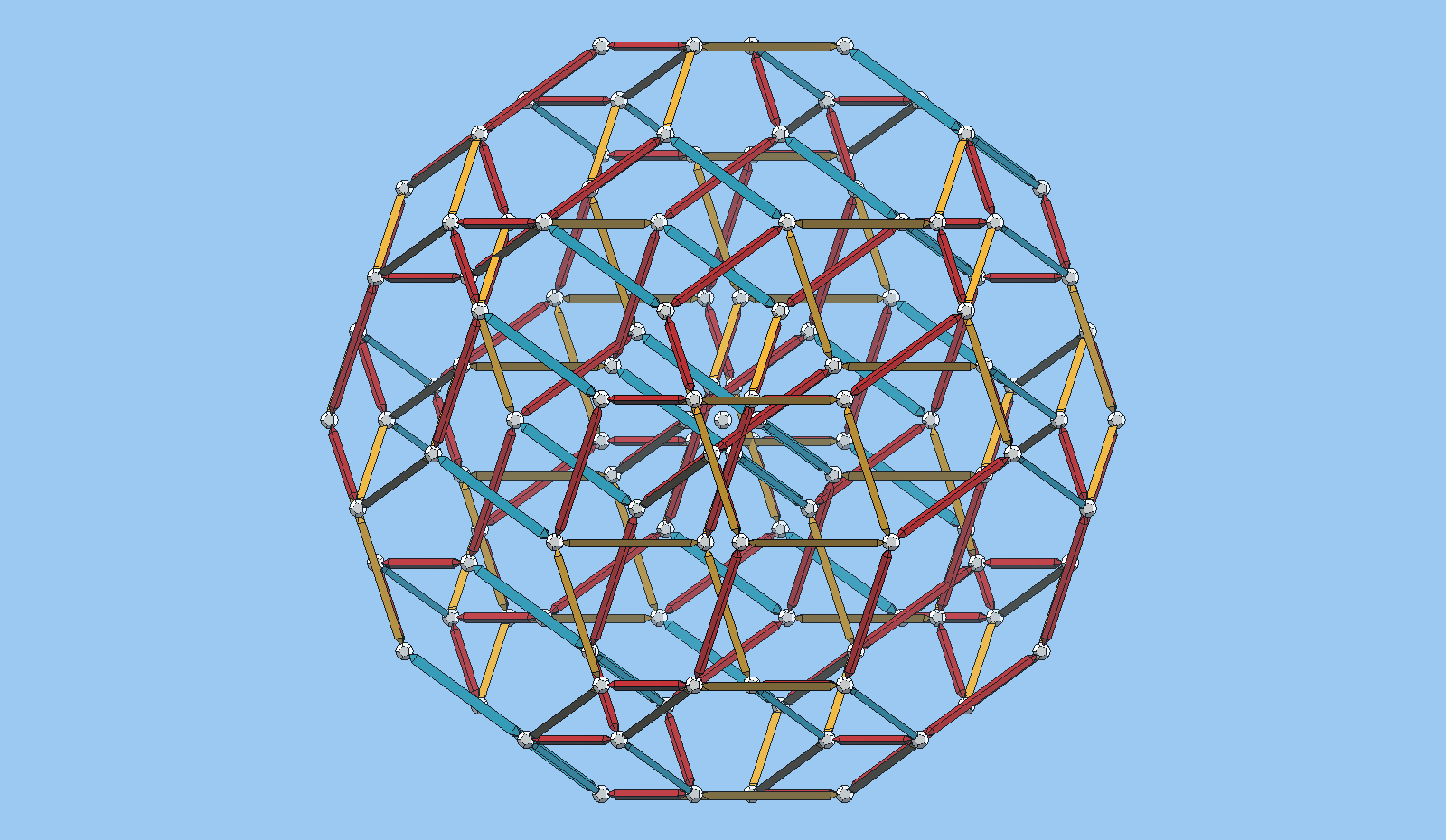This shirt introduced me to John Kostick, perhaps the most prolific vZome user to date. I haven’t worn it in a few years, though it always makes me smile for this reason.

I was at the 13th Gathering for Gardner conference in 2017, when a woman noticed the shirt and said, “Is that Zome?” I said, “Kind of,” and briefly explained about my software. She said, “You need to meet my husband.” The woman was Jane Kostick, and she soon introduced me to John. I brought along David Hall, my collaborator, and that was the beginning of a great friendship and another great collaboration. David and I worked to add features to vZome for John, and he proceeded to produce many hundreds of vZome designs.
I didn’t realize how many until last year when he started publishing them using vZome’s then-new website sharing feature. You can see the result for yourself, and that’s not nearly all of them!
Jane, it must be noted, is a perfect partner to John, since she’s a master woodworker, and together they have created some beautiful and treasured puzzles and other works of art.
The Kostick-catcher, as I now think of it, is an orthogonal projection of the omnitruncated 5-cell, a 4-D polytope, projected to 3-D and then 2-D in the most symmetric way possible. I discovered this projection into Zome in 2007, after working with David Richter on the general idea of “ghost” symmetry.
If the figure looks really distorted, use the Settings button to switch perspective projection on and then off again.
